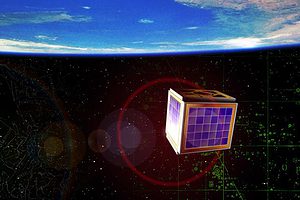Deep Space Industries (DSI), a private space ventures company, has recently announced plans of launching a fleet of asteroid-prospecting spacecraft set to touch base with near-Earth space rocks. The small sized, light weight spacecraft would analyze and sample asteroids for those rich enough in resources like fuel, water and rare minerals. The first launch is scheduled as early as 2015.

DSI wants to be on the forefront of what’s expected to become in the next couple of decades a booming industry – mining asteroids. So far, a couple of billionaires have all pledged their audacious plan of prospecting, exploring and exploiting resources from asteroids – some of which unique to space, while others extremely plentiful while very little on Earth. As for NASA, we reported a while ago that one of its many asteroid exploitation plans is to capture and pull a nearby asteroid into lunar orbit.
The company apparently focuses on the prospecting part, and with this in mind it has developed the “FireFly”, a highly versatile spacecraft which is extremely affordable at the same time, capitalizing on the technical innovations introduced in the past few years in aerospace that allows companies to perform the same operations that would have cost 20, maybe 30 times as much than twenty years ago.
The Firefly will be primarily built out of CubeSat components and transportation in low-orbit, since they’re extremely light weight, can be easily made by piggy-bagging other launches.
“This is the first commercial campaign to explore the small asteroids that pass by Earth,” said Deep Space Chairman Rick Tumlinson
Using low cost technologies, and combining the legacy of our space program with the innovation of today’s young high tech geniuses, we will do things that would have been impossible just a few years ago.”
Harvesting asteroids for the future of space exploration
Tumlinson. That’s a name to remember set to make its distinguished mark in private aerospace, along with Elon Musk from SpaceX – look back at this past in twenty years and you’ll see what I mean. So far Tumlinson has quite a few achievements under his belt – the world’s first space tourist, led the team that took over the Mir space station, was a Founding Trustee of the X Prize, and Founded Orbital Outfitters, the world’s first commercial space suit company.
The FireFlies are extremely light weight and cheap relative to other spacecraft, however they’re very robust and are designed to withstand the hardship of space. Each firefly weighs in 55 lbs. (25kg) and expands on the current top notch miniature technologies, working with NASA and other private aerospace companies to identify the best targets. Again, water and fuel and the primary targets, not rare minerals, since these are imperative to any ambitious manned mission to an far away asteroid or even Mars.
The first firefly is prepped for launch in 2015 for a two to six months journey, with a whole fleet expected to join. In 2016 a heavier 70 lbs. version, DragonFly, will be equipped and tasked to make round-trips to asteroids in order to return vital samples. Such an expedition might take between two to four years and is expected to return some 60 to 150 lbs. of samples.
“My smartphone has more computing power than they had on the Apollo moon missions,” said Tumlinson. “We can make amazing machines smaller, cheaper, and faster than ever before. Imagine a production line of FireFlies, cocked and loaded and ready to fly out to examine any object that gets near the Earth.”
Its not all about space exploration though. DSI has a seemingly sound business plan in mind, as asteroid harvested fuel could very well be used to extend the service life of the current satellite fleet orbiting Earth – each extra month worth $5 million to $8 million per satellite.
“Using resources harvested in space is the only way to afford permanent space development,” said CEO David Gump. “More than 900 new asteroids that pass near Earth are discovered every year. They can be like the Iron Range of Minnesota was for the Detroit car industry last century — a key resource located near where it was needed. In this case, metals and fuel from asteroids can expand the in-space industries of this century. That is our strategy.”


